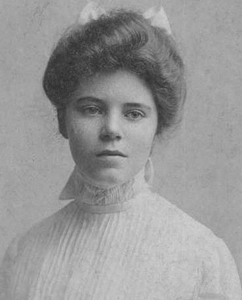Gender equality
This topic reveals what gender equality means and how gender roles are projected to our social reality
The first wave of feminism
The first wave in the mid-nineteenth century followed the civil movements in Europe and the Abolitionist movement in America (a movement for the abolition of slavery). The primary requirements were the right to vote for women, but also equal pay, the right to education and work, maternity protection, etc.
Together with other activists for equality between women and men in the first wave of the feminist movement Emmeline Pankhurst and her daughters, Emily Wilding Davison, and others contributed in Great Britain; in USA Susan B. Anthony and Elizabeth Cady Stanton or Alice Paul; in Germany Louise Otto-Peters, Luisa Aston, Lily Braun and others; in Hungary Mariška Gárdoš or Róza Bédy - Schwimmer; in Ukraine Olena Pčilka (Little Bee) or Nataliya Kobrynska and Olha Kobylianska; in Czech Františka Plamínková, but also Františka Zemínová; in Slovakia Hana Gregorová, Elena Maróthy-Šoltésová, Terézia Vansová and many others in other countries.
Alice Paul
American suffragist and women's rights activist. She led a successful campaign for women's suffrage that resulted in the passing of the Nineteenth Amendment to the U.S. Constitution in 1920, which prohibits discrimination with regard to the right to vote. She organized a parade in Washington, which was a success. She focused on lobbying for a constitutional amendment to secure the right to vote for women. Alice Paul and her colleagues formed the National Woman's Party (NWP) in 1916 and began introducing some of the methods used by the suffrage movement in Britain. In January 1917, the NWP staged the first political protest to picket the White House. The picketers, known as "Silent Sentinels," held banners demanding the right to vote. This was an example of a non-violent civil disobedience campaign. In July 1917, picketers were arrested. In a protest Paul commenced a hunger strike. Paul's hunger strike, combined with the continuing demonstrations and attendant press coverage, kept pressure on the Wilson administration.
Sources
As it turned out, the right to vote, access to education and paid work is not enough. Although officially women gained access to civil rights, there were still barriers in society that prevented them from their actual use. Therefore, the second wave of the women's movement focused on these barriers.

